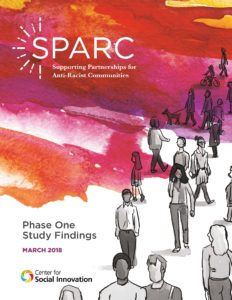Back at the very beginning of 2017, we posted this blog post: The Story of Homelessness in Dallas Keeps Coming Back to One Simple Truth. In that post, we talked about something we noticed while submitting a grant request to United Way of Metropolitan Dallas (UWMD), for additional funding for the MDHA Flex Fund, for the year of July 1, 2017-June 30, 2018. Today, we submitted a report on that very period to UWMD, and we noticed the exact same thing, down to the percentage point: The percentage of African Americans among those helped by the Flex Fund was 67% then, and is 67% percent now.
Here is another non-coincidental instance where these numbers come up, the Housing Priority List Tracker and the Housing Priority List Tracker by Race:
![]()
![]()
Do you see the huge difference between the two? OK, that was a trick question. That’s the point. There isn’t a huge difference between the graph lines in the general tracker and the Black graph lines in the tracker by race, because 65-70% of the those general tracker graph lines are made up of the Black homeless population.
The other day I was meeting with a colleague who works for an agency that has a great program that helps 18-24 year old young women, who are experiencing homelessness. Of about 20 young women, guess how many are White? Just one. The first time I mentioned in public, that the percentage of African Americans in the Dallas homeless population was 65-70% was at a Continuum of Care (CoC) General Assembly meeting around this time in 2016. A colleague from the Vogel Alcove raised her hand, and said that the percentage of African Americans among the children they serve was around 95%.
If these examples aren’t enough to convince you, consider this: On March 2, 2018, the Center for Social Innovation released its first public report, based on careful analysis of qualitative and quantitative data, from Dallas and five other cities. They subsequently released a separate report on their Dallas findings specifically. The amount of qualitative and quantitative data they analyzed was staggering (incidentally, Dallas provided the most quantitative data), including, “111,563 individual records of people from HMIS (homeless management information systems)… 148 oral histories of people and data from 18 focus groups in six communities across the United States.” This research backs up everything we already knew, the overrepresentation of African Americans in the homeless population, nationally, is systemic and pervasive problem.
It is impossible to ignore the data, and say that nothing is going on here. So, as have said before, there are only two ways to explain this phenomenon. Option 1: There is something fundamentally wrong with African-Americans, and they should fix what is wrong with them. Hopefully, that sentence just made you flinch, but don’t think that approach does not still exist. It is “convenient”, to say the least, because it demands no action on our part. Option 2: There is something fundamentally wrong with our society, and we should fix it. This approach is less “convenient”, because it demands action on our part. It does, however, have the advantage of having common sense and decency on its side, as well as the data to back it up.
This is why, here in Dallas, the strategic plan developed by more than 70 Dallas community leaders, and unanimously accepted by the MDHA CoC Board, set implementing the recommendations of the SPARC report as a goal, with the homeless population demographics mirroring the demographics of the general population, as a target. This is why the City of Dallas and Dallas County’s Dallas Area Partnership to End and Prevent Homelessness, has included full support for implementation of the SPARC report recommendations in its own draft strategic plan. This is why Faith Forward Dallas at Thanksgiving Square has unanimously endorsed the need and a plan of action to do their part, in addressing this problem.
This is why we still need to talk about this issue, as well as act on it, because today, as it was 20 months ago, the story of homelessness in Dallas still keeps coming back to one simple truth. As our good friend, Jeff Olivet (see the YouTube above), likes to say, it’s not that the system isn’t working; it is working exactly as it was designed to work. That’s the problem, and that is what we need to change. We look forward, come September, to sharing the next steps the Center for Social Innovation, we, and our partner cities will be taking to address this systemic problem.







